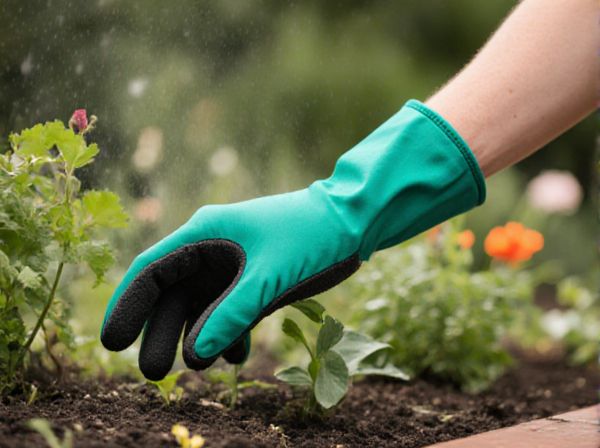
Benching systems vs floor growing Illustration
Benching systems maximize space efficiency and improve plant organization by elevating crops off the floor, enhancing air circulation and reducing pest issues compared to floor growing. Floor growing often leads to uneven light distribution and greater soil-borne disease risks, limiting plant health and yield. Implementing benching systems optimizes greenhouse productivity by facilitating easier maintenance and better resource management.
Table of Comparison
| Feature | Benching Systems | Floor Growing |
|---|---|---|
| Space Utilization | Maximizes vertical and horizontal space, enabling higher plant density | Limited to horizontal ground space, lower plant density |
| Air Circulation | Improved airflow reduces disease and humidity buildup | Poorer air circulation may increase risk of mold and pests |
| Drainage and Sanitation | Elevated benches allow better drainage and easier cleaning | Drainage dependent on floor slope; harder to clean thoroughly |
| Labor Efficiency | Ergonomic height reduces worker fatigue and increases productivity | Requires bending or kneeling, raising labor intensity |
| Initial Setup Cost | Higher due to installation of benches and support structures | Lower capital investment, basic ground preparation needed |
| Crop Types | Ideal for potted plants, seedlings, and vegetable production | Suitable for large, sprawling crops and vine plants |
| Maintenance | Easier access for monitoring and pest control | More challenging, prone to soil-borne pests and diseases |
Understanding Benching Systems in Greenhouses
Benching systems in greenhouses optimize space utilization by elevating plants off the ground, allowing for improved air circulation and easier access for maintenance and harvesting. Unlike floor growing, benching reduces soil-borne disease risks and enhances light exposure, promoting healthier plant growth and higher yields. Their modular design supports efficient irrigation and drainage management, contributing to sustainable greenhouse operations.
What is Floor Growing?
Floor growing in greenhouses refers to cultivating plants directly in the soil or substrate on the greenhouse floor, allowing roots to spread naturally and access nutrients from the ground. This method contrasts with benching systems, which involve elevating plants on tables or platforms to improve airflow and ease of maintenance. Floor growing can enhance water retention and soil health but may increase risks of pests and diseases compared to the controlled environment offered by benching systems.
Pros and Cons of Benching Systems
Benching systems in greenhouses offer increased space efficiency by maximizing vertical growing area and improving plant organization, which leads to higher crop yields per square foot compared to traditional floor growing. These systems facilitate better pest control and easier access for maintenance, reducing labor costs and minimizing plant damage. However, benching systems require significant initial investment and may limit the types of crops grown due to weight constraints and root space limitations.
Advantages and Disadvantages of Floor Growing
Floor growing in greenhouses offers improved root zone temperature control and better structural support for heavy crops, enhancing plant stability and yield. It allows for easier mechanization and irrigation management but may lead to soil compaction and increased risk of soil-borne diseases compared to benching systems. Floor growing also requires more floor space, reducing overall crop density and potentially lower resource efficiency.
Space Utilization: Benching vs Floor Growing
Benching systems maximize space utilization in greenhouses by allowing vertical stacking of plants, increasing the growing area per square foot compared to traditional floor growing. Floor growing often limits plant density due to restricted ground space and access paths, resulting in lower overall crop yield. Optimized benching configurations improve airflow and light distribution, further enhancing plant health and productivity within the same footprint.
Impact on Plant Health and Growth
Benching systems in greenhouses optimize space utilization and improve air circulation, leading to enhanced plant health and accelerated growth compared to traditional floor growing. Elevated benches reduce soil-borne diseases and pests by minimizing direct contact with the ground, promoting cleaner root environments. This controlled setup also facilitates better drainage and easier maintenance, resulting in higher yields and healthier plants.
Cost Analysis: Initial Setup and Maintenance
Benching systems in greenhouses typically require higher initial setup costs due to materials and structural support but offer easier plant management and optimized space utilization. Floor growing has lower upfront expenses but incurs higher ongoing maintenance costs related to soil management and pest control. Over time, benching systems can provide better cost efficiency through increased productivity and reduced labor.
Workflow Efficiency and Accessibility
Benching systems in greenhouses optimize workflow efficiency by organizing plants at an ergonomic height, enabling faster planting, maintenance, and harvesting compared to floor growing. Elevated benches improve accessibility by reducing the need for bending or kneeling, minimizing worker fatigue and enhancing overall productivity. This structured layout also facilitates better pest management and irrigation control, contributing to more consistent crop quality and yield.
Suitability for Different Plant Types
Benching systems offer tailored support for delicate or small plants like seedlings, herbs, and ornamental flowers, providing uniform light exposure and efficient space utilization. Floor growing is better suited for large, spreading crops such as tomatoes and cucumbers that require ample root space and robust support structures. Different plant species benefit from distinct growing environments; benching systems optimize conditions for high-density, precise cultivation, while floor growing accommodates expansive, heavy-fruiting plants.
Choosing the Right System for Your Greenhouse
Benching systems in greenhouses maximize space utilization by providing tiered surfaces for plants, enhancing airflow and ease of maintenance compared to floor-growing methods. Floor growing allows for larger plant placement and natural soil use but often limits density and can increase pest exposure. Selecting the right system depends on crop type, greenhouse size, and operational goals to optimize growth conditions and resource management.
Benching systems vs floor growing Infographic

 gardendif.com
gardendif.com